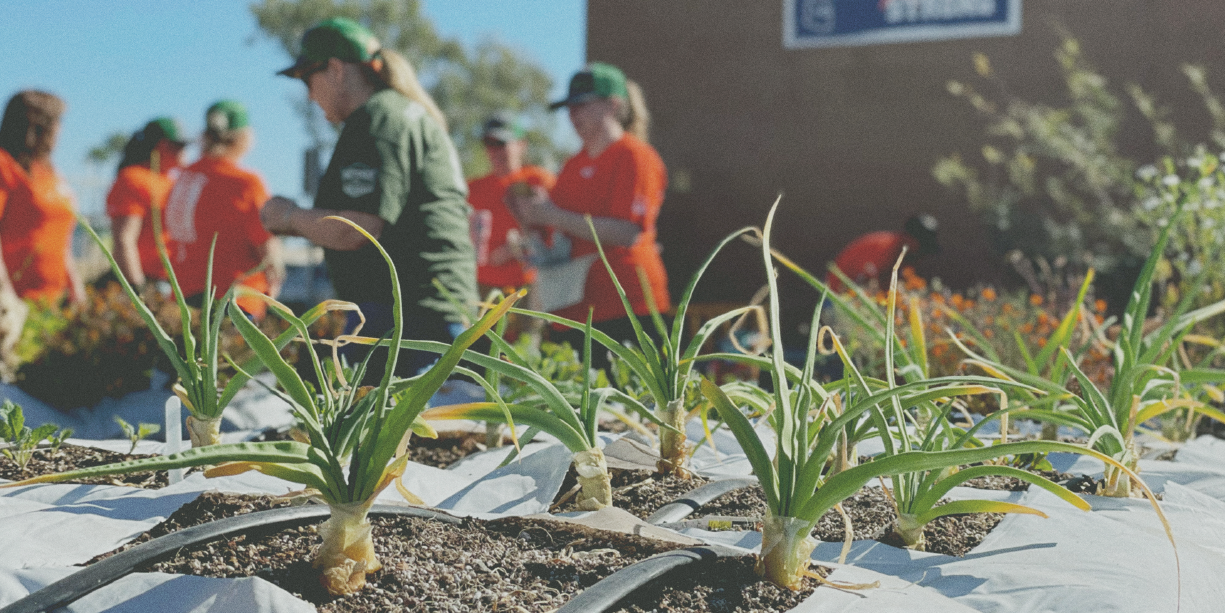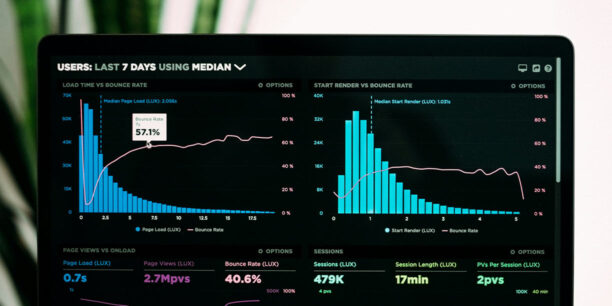The Current State of Donor Engagement for Food Banks

Food banks pour passion and ideas into expansive programs to relieve communities from hunger. At Classy, we always look for innovative ways to best support these nonprofits by providing seamless paths to generosity.
Partnerships with over 60 food banks, including Feeding America, help us continue learning about top priorities, roadblocks, and new ideas. This informs us on how to shape our technology to support these nonprofits’ ambitious goals best.
Most recently, Classy joined RKD Group, Capital Area Food Bank, and Food Bank for New York City for a timely conversation with over 40 organizations. Our representatives, ranging from vice presidents of fundraising initiatives and executive directors to senior vice presidents of marketing, discussed what defines successful donor engagement, connections, and stewardship in the modern social landscape. We used the time to explore ways modern organizations evolve to meet growing demands. Below, you’ll hear the most significant takeaways from hunger-relief nonprofits to bring back to your organization.
The Top Takeaways From Our Food Bank Roundtable
1. There’s Potential Ahead in Acquiring Next-Gen Donors
Alongside the common priority of finding new ways to reach supporters who could make a long-lasting impact on food banks, the newest generation of donors was a hot topic. The impending great wealth transfer will affect Gen Z and Millennial donors in the next two decades, making now the most opportune time to build strong relationships.1
Younger generations must decide which nonprofits resonate most deeply with their passions. That includes choosing whether they’ll seek new causes or remain loyal to those they know. These are also the individuals with more digital acuity across various channels than other generations. From the wide array of social media platforms that now include the latest Threads app to online media outlets they engage with daily, online engagement is ubiquitous in their lives.
Our roundtable of attendees discussed the delicate balance between being on the right channels and standing out on those channels to make a meaningful first impression. It’s critical to craft appealing copy that speaks to the tangible impact of each donation to capture a person’s attention and inspire action. Tapping into the personal side of video content and tailoring messages to local communities can do a lot to attract the right people to your food bank.
Converting Curiosity Into a Donation
With multiple touchpoints at a food bank’s disposal to create a memorable first impression, it’s vital to understand how each plays a key role in the greater donor experience.
The introduction should detail who a food bank serves and help potential donors begin to envision the value they can make with a single gift. From there, the donation page is where organizations guide decisions around how much someone can give to make the biggest impact in that moment. Aspects like suggested gift amounts and impact blocks that tie outcomes to monetary value offer this clarity.
Once food banks establish the initial connection with younger donors, elements like a mobile-friendly design, modern payment options, and a simple flow on the donation site tie a nice bow on the overall first impression. When you attract donors from modern channels like social apps, the donation process should feel consistent to the experience they received on the previous channel for the best chance at seeing a gift come to completion.
Timely Fundraising Tips for Food Banks
2. The Power of Thoughtful Engagement Fuels Loyalty
On the topic of helping donors see the value of their gift, our roundtable talked about how to continue that sentiment as part of a donor retention strategy. To ensure every engagement point is memorable, it’s critical to reiterate the impact of someone’s investment in your organization as a reminder of their value to your mission.
Shining a Spotlight on Increased Need
As hunger-stricken populations expand, there’s an even greater need for ongoing support. We heard a few ways organizations directly aligned aspects like food, number of families, and total individuals fed with specific dollar amounts to create more detailed repeat donation appeals. When people see an opportunity to help five families eat dinner next week, instead of prompting a vague dollar amount, it’s more likely their bond strengthens and their giving patterns become more reliable.
We loved hearing from David Jones, the Vice President for Fundraising Operations from Food Bank for New York City, about some ways his nonprofit calls on supporters for increased generosity after their initial gift. One that stood out was adding real-life examples of rising food costs in direct mail solicitations to emphasize community needs across the five boroughs. Retention appeals can also help you showcase the beneficiaries whose lives change with every donation decision and offer an easy way for donors to stretch their support through a monthly donation that fuels ongoing demand.
3. Unprecedented Financial Times Call for Courageous Asks
Over the past few years, the growth in support for food banks led to conversations about maintaining increased generosity in uncertain economic times. Inflation continues to impact the price of food, heightening the demand for food banks and associated programs. It also means gift amounts received one year ago cannot produce as much supply or impact this year.
The room agreed that it’s more important than ever to be confident and courageous in asking for more from donors who can contribute to match the growing need. It’s also an opportune time to test new things and share new ideas at your food bank that respond to the current state of the economy.
You’re not alone if asking people to increase their generosity feels a bit nerve-racking when you don’t know exactly how the economy impacts each donor. Our food bank participants talked about the ease they felt when pairing those appeals with a strong reason why donations matter at that time.
Be Willing to Test
Part of growing a relationship with donors is establishing nonprofit transparency about where the organization is and what it needs to make the most significant impact. Food banks can start with something as simple yet effective as offering donors the option to cover transaction fees. For example, Mary Beth Healy, the Chief Revenue and Marketing Officer from Capital Area Food Bank shared that her organization increased the fees that donors can cover to 13%, the percent increase in the food bank’s food budget. Being willing to test small elements with your donors can unlock new avenues to raise more that you might never have thought of while requiring far less effort than an entirely reimagined fundraising strategy.
Specificity Matters
Appealing to donors to give more means being highly specific about the gift amount that will make an impact. It’s worth adding an array of dollar amounts that are higher than usual on donation pages or specific campaigns to see what can come from it. Many food bank leaders shared the benefit they saw from increasing their individual fundraising page goals on peer-to-peer campaigns and saw their average donation total rise significantly.
As we head into Giving Tuesday 2023 and the year-end giving season, it’s a good time to strip away any preconceived limits to your fundraising goals to fuel your essential programs. One way food banks actively practice those more courageous appeals is by bringing fund drives back for monetary gifts through a donation page, crowdfunding, or other dedicated campaign. While put on halt during the COVID-19 pandemic, organizations are reintegrating virtual fundraising into strategies to invite increased giving online. Fund drives also allow organizations to be more agile to achieve larger goals.
4. Trust and Transparency Are Everything
Millennials and particularly Gen Z are more inclined to give to organizations they trust. Still, we talked about how that trust is declining. To combat this, it’s critical to share the correct information with donors to bring clarity about how money translates to impact.
The group agreed that transparency and competence are the key drivers of trust. Every email, text, and phone reply is a chance to show a donor that your organization cares, understands them and their giving history, and provides them with the answers to any curiosities they may have to establish that trust.
Stand Apart By Knowing What Matters to Donors
People come across 10,000 ads on average daily. Those ads include nonprofits’ fundraising appeals. Part of standing out in a sea of other messages is establishing a unique bond with individuals. That doesn’t necessarily mean trying to be their best friend but rather showing up as an investor in your mutual goal of hunger relief. It also may involve communicating when you’re wrong or practicing transparency when you need urgent support. Breaking out of the highlight reel and sharing the vulnerability of being an organization in this specific cause sector means a lot to people.
Moving Food Banks Forward through Modern Fundraising
Food banks take on incredibly impactful work that changes many lives. As fundraising evolves in response to a shifting economy, generational giving patterns, and more ways to give than ever before, Classy will be here to support you.
Our mission to mobilize and empower the world for good starts with each of your missions to advance change through food access. By learning firsthand about what will make a difference for modern food banks, we can continue innovating our fundraising platform to help you deliver a seamless giving experience that leads to greater lifetime value.
Copy Editor: Ayanna Julien
Article Source
- “The Great Wealth Transfer From Baby Boomers to Millennials Will Impact the Job Market and Economy,” Forbes, accessed August 30, 2023, https://www.forbes.com/sites/jackkelly/2023/08/09/the-great-wealth-transfer-from-baby-boomers-to-millennials-will-impact-the-job-market-and-economy.

Learn More about Classy for Food Banks
Subscribe to the Classy Blog
Get the latest fundraising tips, trends, and ideas in your inbox.
Thank you for subscribing
You signed up for emails from Classy
Request a demo
Learn how top nonprofits use Classy to power their fundraising.



